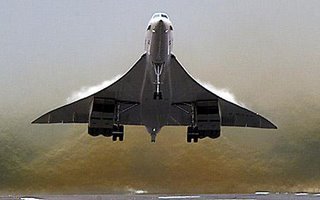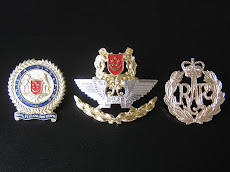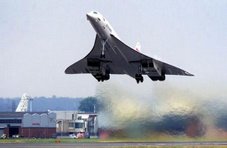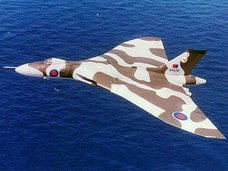
>> CONCORDE: Lest we forget
by Derek Yeo - SINGAPORE - 21 July 2006
"CONCORDE was born from dreams, built with vision, and operated with pride." - Capt Mike Bannister, before he flew British Airways' Flight BA002, New York to London, the final Concorde scheduled passenger service on 24 Oct 2003.
AIR FRANCE Concorde F-BTSC (Airframe No 203), departed Paris almost six years ago, on 25 July 2000, outbound for New York on a charter flight. It did not make it. Sixty seconds into the take-off, the supersonic jet crashed tragically near Charles De Gaulle airport.
All on board died. The 113 fatalities included 100 passengers, two pilots, a flight engineer and six cabin crewmen. Four people, in a hotel at the crash site, also perished.
The tragedy followed a chain of events. A piece of metal strip caused a tyre blow-out on the main landing-gear during the Concorde's take-off. Rubber shrapnel from the blow-out ruptured a fuel tank. Then, in its last moments in flight, fire broke out and two engines failed. Investigations revealed too, that the aircraft's take-off weight had been excessive.
After the crash, despite major modifications embodied on the remaining fleet, Concorde was soon retired. Escalating costs could not sustain keeping the fleet airworthy and in service any longer.
Although the fleet of 16 production aircraft had flown for 27 years since passenger services began on 21 Jan 1976, the fleet was still young when services ended in 2003. In maintenance, repair and overhaul terms, with only 2 airlines flying 14 Concordes between them - and not all serviceable at any time - the type proved costly over its service life to sustain.
Revenue dropped as astronomical fares on the trans-Atlantic routes kept passengers away. Low passenger load per flight - Concorde's capacity is just 100 passengers in a single "luxury" class - added to its problems.
A Soviet Union's Tupolev Tu-144 supersonic passenger jet - dubbed "Concordski" in Russian - tragically crashed at the 1973 Paris Air Show. In terms of promoting commercial supersonic travel, the Tu-144's disaster proved detrimental to Concorde's image. It was not, however, the only Tu-144's setback.
Having begun cargo service in 1975, then regular passenger service a year on, the type finally ceased flying in 1983 because of technical failures.
An aeronautical marvel no doubt, Concorde was ahead of its time. Its ogival delta-shaped wing, for instance, designed for supersonic flight was a first for a passenger airliner. Only one other aircraft had the same shaped wings: the British AV Roe's Vulcan nuclear bomber. At Mach 1 to 2 speed, the Concorde's heat-treated skin registered a constant 127 degrees Centigrade temperature.
No passenger jets matched Concorde in aeronautical terms. In the sky, Concorde was an icon of grace and power. It represented man's greatest endeavour in commercial aviation.
But commercially, it became apparent to Concorde's makers, British Aircraft Corporation and Aerospatiale, and to Air France and British Airways that the type had become increasingly unviable. Maintenance, repair and overhaul (MRO) costs escalated. With a fleet of only 16 production aircraft - and not all airworthy - Concorde's upkeep proved costly over its short service life.
Only French and British national prestige kept Concorde airborne. Perhaps, Concorde's very own advanced technology sounded its death knell.
That tragic event in July 2000 help hastened the end of the world's only supersonic airliner.
Concorde scheduled passenger service began on 21 Jan 1976. On 24 Oct 2003, British Airways' Concorde Flight BA002 departed New York's JFK Airport on its last scheduled airline service. Sadly, when BA002 touched down at London's Heathrow Airport two hours later, 27 years of sterling airline service landed too. The Concorde era had ended.
Copyright © 2007 AIRMENews. All rights reserved.
Friday, July 21, 2006
Subscribe to:
Post Comments (Atom)





No comments:
Post a Comment